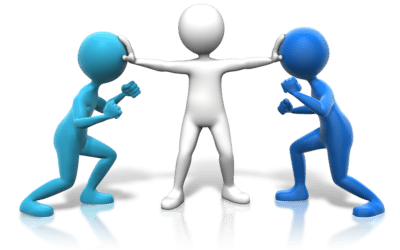
Conflict can be defined as a strong disagreement between people and groups that results in arguments (Conflict, 2014). Conflicts can be unpleasant, distracting, professionally expensive and emanate from organizational changes, scarcity of resources, prejudices as well as miscommunication (Haraway & Haraway, 2005). Ultimately, all causes are united by their destructive tendencies. Due to the deleterious consequences of tension in the workplace, the analysis and resolution of conflict is paramount. The following will explore conflict more deeply, as well as interventions to resolve conflict in the workplace.
Conflict management skills have become essential tools for supervisors and managers because conflicts that are left unaddressed can cause unintended consequences leading to physical, psychological and behavioral stress in the work environment (Haraway & Haraway, 2005). Haraway and Haraway (2005) cited that unresolved conflicts could also result in high costs associated in employee turnover, absenteeism, loss of productivity and, in some cases, loss of life.

Two common forms of conflict management in the healthcare setting is avoidance and adversarial approaches (Haraway & Haraway, 2005). The former approach never addresses the issues, and the latter creates an environment whereby information is distorted in a way to try to win and make the other person wrong (Haraway & Haraway, 2005). However, an integral component to successful conflict management is to understand the other person’s point of view, and find solutions close to both individuals’ goals (Haraway & Haraway, 2005).
Haraway and Haraway (2005) conducted a study on seventeen men and five women. The participants were employees in various areas of healthcare, ranging from supervisors to directors. Employee experience ranged from one year to as high as 24 years. The training sessions were cumulatively six hours in length, split over two days approximately one week apart (Haraway & Haraway, 2005). The interventions covered several topics: the inevitability of conflict, reasons for conflict, understanding the dangers of unresolved conflict, and the different ways people respond to conflict. Participants were instructed to observe these aspects while at work, in between interventions. Additionally, participants were encouraged to practice learned conflict management strategies and skills (Haraway & Haraway, 2005).

Pre-test and post test measurements were taken to determine the efficacy of the intervention. The test administered was called the Revised Occupational Stress Inventory (OSI-R). It measured factors such as the employee’s sense of work overload, insufficiency, ambiguity, boundary, and responsibility. The test also ranked various forms of strain such as vocational, psychological, interpersonal, and physical strain among other measures (Haraway & Haraway, 2005). Results suggested that the intervention, post-test compared to pre-test measures, created significant changes in the participants’ sense of stress and efficacy in managing conflicts (Haraway & Haraway, 2005).

Conflict management is a skill set that is paramount in the work environment, as well as in personal relationships. Harnessing and wielding tools that enable individuals to diplomatically and tactfully resolve disagreements, can provide fertile ground for greater job satisfaction, employee relationships, and improved productivity.
References
Conflict (2014). Merriam-Webster. Retrieved from http://www.merriam-webster.com/dictionary/conflict
Haraway, D.L., & Haraway, W.M. (2005). Analysis of the effect of conflict management and resolution training on employee stress at a healthcare organization. Hospital Topics, 83(4), 11-17.
-Michael McIsaac
